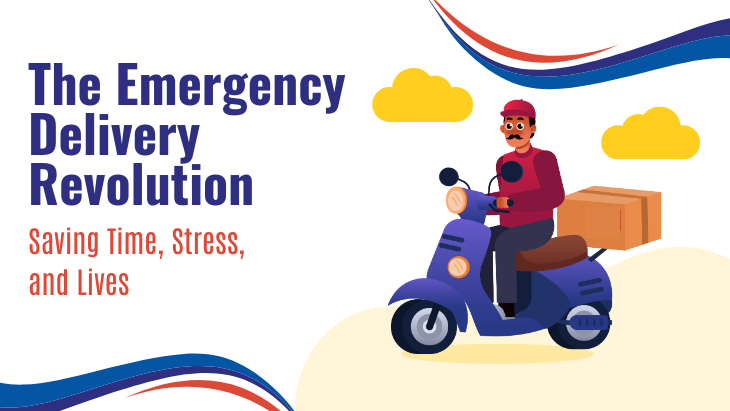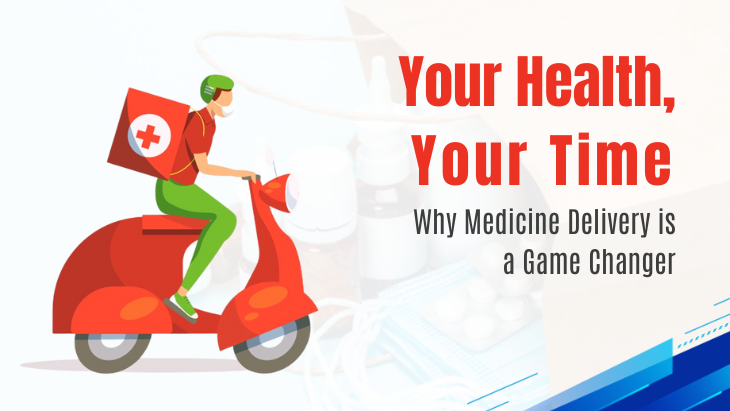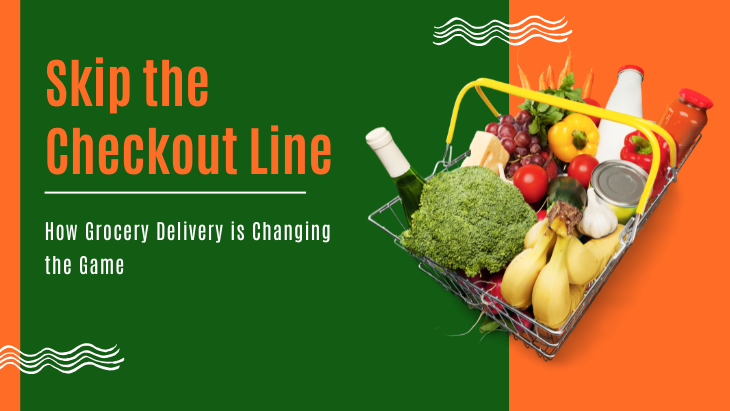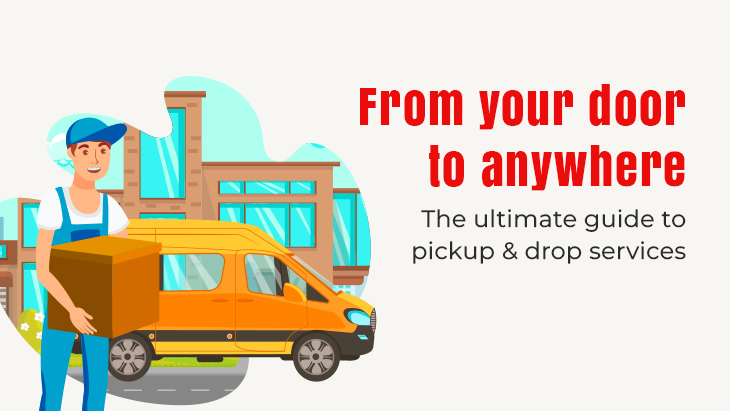Instant gratification is the way of the day in the fast-paced world we live in. From ordering food and grocery delivery to even purchasing clothes, everything is just a button away from Grocery Delivery Services. But emergencies, be they medical supplies, urgent documents, or life-saving devices, are not so much about convenience; they are about speed and efficiency.
That's where the emergency delivery revolution comes in. The emergence of cutting-edge logistics, cutting-edge technology, and specialized emergency response networks is changing the way critical deliveries are executed. From drone deliveries of medical supplies to 24/7 courier service for emergency requirements, emergency logistics is changing the way crises are handled.
The Increasing Demand for Emergency Deliveries
Emergencies do not wait. Whether it's a critically ill patient who needs an urgent blood transfusion, a company that needs last-minute legal documents, or a disaster-struck area that needs immediate supplies, time is of the essence. Delay can mean loss of life, financial loss, or crippling disruptions.
The demand for emergency deliveries has increased manifold on account of several reasons:
Urbanization and Traffic Congestion As cities grow, traffic congestion becomes a serious impediment in emergency responses. Traditional delivery mechanisms struggle to navigate clogged-up streets, and alternative logistics become necessary.
Advances in E-commerce and Logistics: With Amazon, Uber, and FedEx changing the face of logistics, expectations of faster delivery times have increased manifold. People want everything delivered fast, and the same applies to emergency situations too.
Healthcare Emergencies: Hospitals and clinics increasingly rely on rapid delivery of medical supplies such as blood, organs, and medicines. A few minutes can mean the difference between life and death.
Natural Disasters and Crisis Response: When earthquakes, floods, or pandemics occur, emergency deliveries become essential to deliver food, medicine, and rescue equipment.
How Technology is Revolutionizing Emergency Deliveries
Technology has been the prime enabler in making emergency deliveries faster, more efficient, and highly reliable.
1. Drones and Aerial Delivery Systems
Drones are revolutionizing emergency deliveries, particularly in inaccessible or remote areas. Zipline and Wing have already been employing drones to make medical supply, vaccine, and even blood deliveries in remote and disaster-stricken areas.
Speed: Drones fly above traffic and reach destinations in a quarter of the time.
Accessibility: They can reach areas where roads are impassable or infrastructure is non-existent.
Reliability: AI-driven navigation ensures accuracy and safety.
2. AI and Predictive Logistics
Artificial intelligence (AI) is helping emergency services predict and plan urgent deliveries even before they are due. AI algorithms scan traffic conditions, weather forecasts, and supply chain alerts to plan delivery routes for quicker transportation.
For example, in healthcare, AI-driven systems can forecast when a hospital is likely to run out of certain medicines or blood types and schedule proactive deliveries before an emergency situation occurs.
3. On-Demand Delivery Services
The advent of gig-economy-led logistics has given rise to a new age of emergency deliveries. Uber, Swiggy, and Dunzo are expanding their core services from food and retail to urgent document and medical supply delivery. This makes individuals and businesses access instant delivery solutions 24/7.
4. Smart Warehousing and Robotics
Warehouse automation allows emergency supply chains to function without human intervention. Robotic arms, automated inventory management, and AI-driven dispatch systems ensure critical supplies are always stocked and ready for dispatch in real-time.
Real-World Impact of Emergency Delivery Innovations
1. Life-Saving Blood and Organ Deliveries
Several healthcare institutions are now relying on fast logistics for blood and organ transport. In India, companies like Redwing Labs and the Indian Red Cross are using drone technology to deliver blood to remote areas, cutting delivery time from hours to minutes.
In the United States, companies like the United Network for Organ Sharing (UNOS) have partnered with airlines and courier services to ensure organs are delivered safely and with high efficiency, increasing transplant success rates.
2. Emergency Medical Supply Delivery During COVID-19
The COVID-19 pandemic brought into focus the importance of fast and efficient emergency deliveries. With lockdowns, logistics companies worked day and night to deliver oxygen cylinders, vaccines, PPE kits, and essential medicines to hospitals and patients.
Tech-enabled logistics companies ensured that even in the worst phases of the pandemic, emergency medical deliveries never stopped.
3. Disaster Relief and Humanitarian Aid
Natural disasters are known to leave thousands stranded without the bare essentials. Emergency deliveries through air transport, drones, and special courier networks are instrumental in delivering food, medicine, and shelter kits to affected areas.
For example, during the Haiti earthquake, logistics companies collaborated with humanitarian agencies to deliver life-saving essentials in hours, decreasing casualties by a major percentage.
Challenges and the Road Ahead
Though there have been remarkable advances, emergency delivery systems are still working to overcome challenges:
Regulatory Hurdles: Most countries have strict rules for drone deliveries, and it becomes difficult for companies to deploy them at scale. Governments need to create policies that allow innovation while ensuring safety.
Cost and Accessibility: High-end logistics solutions are too costly, so they might not be in everyone's pocket. There is a need for more research and investment in infrastructure to bring emergency deliveries within everyone's reach.
Infrastructure and Connectivity: Off-grid locations with poor connectivity are still behind in receiving timely deliveries. Better infrastructure and satellite-based logistics solutions can fill this gap.
Conclusion
The Instant Genie emergency delivery revolution is not just about speed it's about saving lives, reducing anxiety, and making overall efficiency in crisis management improved. With the rise of AI, drones, and real-time logistics, emergency deliveries are becoming smarter, faster, and more affordable. As technology continues to advance, we can expect a future where emergency deliveries are instant, seamless, and more dependable than ever before. Whether it is receiving a life-saving medication within minutes, ensuring critical documents arrive at the destination on time, or responding in the event of a disaster at lightning speed, emergency logistics is going to revolutionize the way we perform urgent affairs forever.







Post Comments